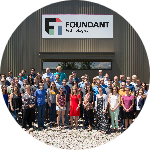The decision to invest in any capacity-building tool is a challenging one for UK organisations. You are stepping into risk, which can be daunting when every pound matters. Getting buy-in from stakeholders can be even more intimidating. Whether you’re still trying to decide what it is you need or have already identified software as the answer, some concrete steps upfront can help you achieve your goals..
5 Steps to Getting Buy-in for New Technology
- Identify the Issues You’re Trying to Solve
- Weigh the Risks
- Calculate Return on Investment (ROI)
- Find the Right Solution
- Make the Pitch
1. Identify the Issues You’re Trying to Solve
Understanding the specific challenges your organisation faces is crucial to determining whether software can provide an effective solution. UK charities and trusts face unique pressures, and identifying your particular pain points is the first step toward meaningful change.
Common challenges UK organisations encounter include:
- Lack of time and resources: According to the 2022 Charity Digital Skills Report, 68% of charities cited lack of resources (funding and time) as the main barrier to getting more from digital.
- Staff burnout and turnover: Research from NVCO’s 2023 UK Civil Society Almanac shows that staff retention is a significant challenge, with 80% of charity leaders reporting concerns about employee wellbeing and burnout.
- Manual administrative processes: The 2022 Charity Digital Skills Report also found that 51% of UK charities still lack a digital strategy, suggesting many are still relying on manual processes for critical operations including grant management and impact reporting.
- Limited reporting capabilities: The Charity Commission’s 2021 report on public trust found that 70% of the public consider clear reporting to be a key factor in building trust, yet many charities struggle to produce these reports efficiently.
- Difficulty demonstrating impact: Research by New Philanthropy Capital (NPC) shows that 75% of UK charities find measuring and communicating their impact challenging without appropriate digital tools.
Technology solutions can address these challenges by centralising data, automating routine tasks, and providing robust reporting capabilities. With the right system in place, UK organisations can redirect valuable time and resources to mission-focused activities.
–
2. Weigh the Risks
UK charities’ aversion to risk is one of the biggest hurdles to changing technology systems. Organisations can be fearful of choosing the wrong system, particularly if they’ve experienced unsuccessful implementations in the past. Staying with the current system, whether it’s working well or not, can feel safer and easier.
However, while change includes an element of risk, the risks of not changing—and continuing to use manual processes or cobble together a variety of systems that don’t meet your needs—are likely far more significant.
One of these risks is staff burnout. Inefficient or ineffective systems can contribute to this issue by draining staff members’ already limited time and pulling them from the work that matters most. This can lead to burnout and eventually cause experienced, knowledgeable team members to leave. The-costs of high turnover-are significant, including broken relationships with constituents and lost institutional knowledge.
Another critical risk is your organisation’s compliance status. UK charities have high standards for stewarding donor pounds and accounting for them with the Charity Commission to maintain their status. Not having a system to manage this can put this status and a charity’s reputation at risk.
Furthermore, we have become reliant on the data we can extrapolate from software systems to make good decisions about where to invest time, energy, and funds in our communities. This requires an effective database that centralises information and makes it accessible when needed.
–
3. Calculate Return on Investment
UK organisations are, appropriately, very cost conscious. No matter your specific mission, your goal is to get pounds into the community to help others. However, there’s been an underinvestment in capacity building across the charity sector
How do you tackle this challenge when advocating for new technology? fFocusing on the potential-return on investment-(ROI).
Ways to measure ROI include:
- Risk avoidance: Calculate the cost of potential regulatory fines, lost funding due to reporting errors, or reputation damage from mishandled data.
- Time and resource savings: Quantify staff hours currently spent on manual processes. Research by the Charity Finance Group suggests that effective digital systems can reduce administrative costs by up to 20% in medium-sized charities.
- Mission advancement: A 2023 study by Charity Digital found that 83% of charities with robust digital tools reported being able to expand their services and reach more beneficiaries compared to pre-implementation.
When communicating the need, emphasise the amount of time that-can be refocused on mission.
4. Find the Right Solution
It is important to understand the key features that will meet your organisation’s needs. Create a spreadsheet with the key considerations and compare your options to-determine the best solution.
Important considerations for UK organisations include:
- Price: Consider not just the initial investment but ongoing costs.
- UK data compliance: Ensure the system meets UK GDPR requirements and Charity Commission expectations.
- Features and functionality: Will they support your specific processes and workflows?
- Client services and support: Are support hours compatible with UK time zones? Is UK-specific training available?
- Ability to meet long-term needs: Consider future initiatives and reporting requirements for ensured success.
Creating a side-by-side comparison will highlight which solution is best for your organisation, which will be helpful when making a case for a new technology solution to your trustees or board.
–
5. Make the pitch
Once you have identified the problems you want to solve, weighed the risks of changing/not changing systems, calculated the ROI, and researched options, it’s time to approach the decision-makers in your organizsation.
For UK charities and trusts, this often means preparing a presentation for trustees who may have varying levels of technical knowledge. Consider these strategies:
- Know your audience: Understand the communication styles of your trustees or board members. Some may respond better to detailed financial analysis, while others prefer stories about impact.
- Prepare case studies: Share examples of similar UK organisations that have successfully implemented the technology you’re proposing.
- Involve key stakeholders early: Get input from those who will use the system daily before making your pitch.
- Address security concerns: UK trustees often prioritise data security and compliance, so be prepared to discuss these aspects in detail.
- Present a clear timeline: Outline implementation milestones, including training requirements and any potential disruption to operations.
Getting buy-in for new technology doesn’t have to be overwhelming, but you do need to think strategically about what you’re saying and how you involve stakeholders in the process. These steps will help you confidently advocate for a change that will maximise your impact and create ROI beyond pound signs.
About the Author

Foundant Technologies has specialized in making philanthropy easier and more impactful through innovative software solutions and exceptional client experiences since 2007. Passionate about philanthropy, our team is dedicated to meeting the unique needs of grantmakers, scholarship providers, community foundations, and nonprofits to enable change-makers to make the world a better place for all.
